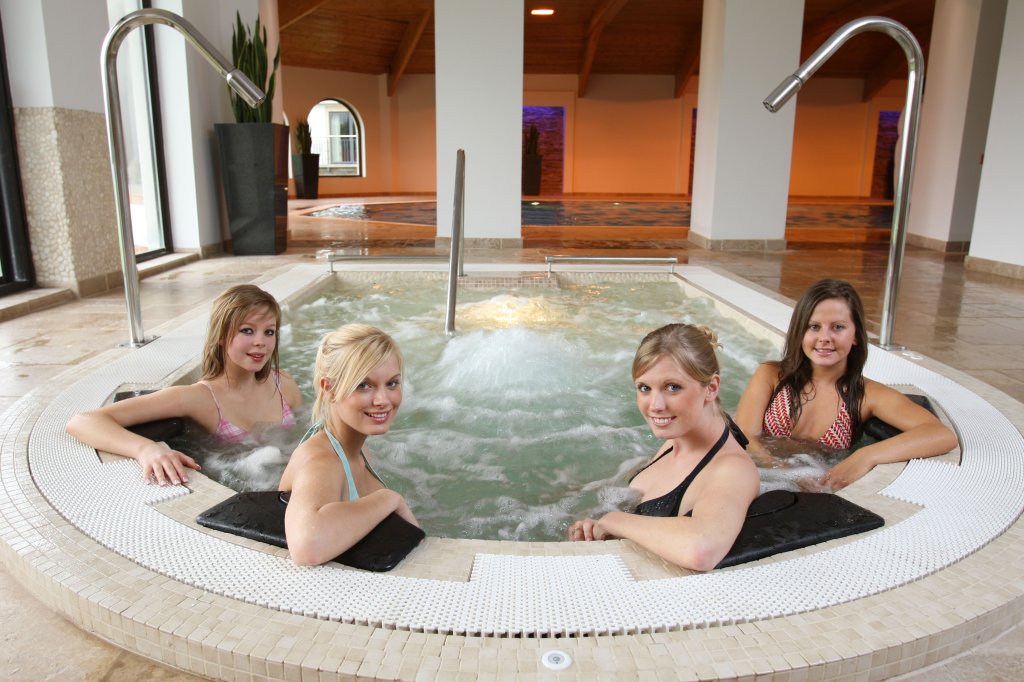
Key Takeaways:
-
Hydrotherapy is a gentle and effective method for soothing sensitive and diabetic skin conditions, such as eczema.
-
It enhances hydration, reduces inflammation, and improves circulation, which are crucial for diabetic skin health.
-
Creating a personalized hydrotherapy routine at home can provide ongoing relief and improve skin integrity.
-
Precautions should be taken to ensure the safety and effectiveness of hydrotherapy treatments for individuals with diabetic skin.
-
Combining hydrotherapy with a comprehensive skincare regimen can lead to better outcomes and healthier skin.
What Is Hydrotherapy?
Imagine immersing yourself in water and feeling immediate relief from your skin’s sensitivity. That’s hydrotherapy. It’s a practice that involves using water at different temperatures and pressures to heal and maintain health. The water can be in the form of a bath, shower, or even a wet compress. For those with sensitive or diabetic skin, hydrotherapy is like a gentle hug for your skin, offering soothing relief without the harshness of chemical treatments.
Why Diabetic Skin Requires Special Attention
Now, diabetic skin isn’t like any other type of skin. It’s more prone to dryness, cracking, and infections because high blood sugar can cause significant dehydration and poor circulation. This is why it’s so important to treat diabetic skin with extra care and why hydrotherapy can be a game-changer in managing skin conditions like eczema.
Dive into the Benefits of Hydrotherapy
So, why should you dip your toes into the world of hydrotherapy? Because the benefits for diabetic skin are as refreshing as the water itself. Let’s break it down:
Hydrating Effects on Dry, Sensitive Skin
First and foremost, hydrotherapy is a champion at hydrating the skin. When you have diabetes, your skin can become parched and brittle, making it an open invitation for irritation and eczema flare-ups. Hydrotherapy helps to lock in moisture and create a barrier against potential irritants. Think of it as a moisture reservoir for your skin, keeping it plump, elastic, and less prone to cracking.
Reducing Inflammation and Itching
Moreover, the calming properties of water can significantly reduce inflammation and that maddening itch that often accompanies eczema. The gentle pressure of water can also provide a massaging effect, which helps in decreasing the skin’s histamine response — that’s the culprit behind the itchiness.
Improving Circulation for Better Skin Health
And let’s not forget about circulation. Good blood flow is vital for skin repair and health, especially for those managing diabetes. Hydrotherapy stimulates blood flow, which means more oxygen and nutrients can reach your skin cells, helping them to repair and fend off infections more effectively.
Most importantly, as you consider hydrotherapy, remember that while it offers many benefits, it’s not a standalone cure. It’s a part of a broader approach to managing sensitive and diabetic skin, and should be complemented with other skin care practices and medical advice.
Types of Hydrotherapy Sessions
When it comes to hydrotherapy, there’s not just one way to make a splash. There are several types of sessions that can benefit your sensitive or diabetic skin:
-
Warm Baths: Soaking in a warm bath can soothe the skin and relax the body. It’s essential not to use hot water, as it can strip the skin of its natural oils.
-
Cool Compresses: Applying a cool, wet cloth to irritated skin can calm inflammation and provide relief from itching.
-
Contrast Baths: Alternating between warm and cool water can stimulate circulation and reduce inflammation.
Each of these sessions has its own set of benefits, so it’s important to tailor your hydrotherapy to your skin’s needs and your personal preferences.
Real-Life Success Stories: Eczema Relief Achieved
There’s nothing quite as convincing as hearing about the success others have had with hydrotherapy. People from all walks of life have found solace in these waters, finding that consistent hydrotherapy sessions can lead to significant improvements in their eczema symptoms.
Personal Testimonials on the Impact of Hydrotherapy
Take Sarah, for example, who struggled with eczema for years before discovering hydrotherapy. “After just a few sessions, I noticed my skin was less red and itchy,” she shares. “Now, it’s a regular part of my routine, and my flare-ups have become much more manageable.”
Expert Insights: What Professionals Say
Medical professionals also advocate for the benefits of hydrotherapy. Dermatologists often recommend it as a complementary treatment to traditional eczema therapies. “Hydrotherapy can be incredibly soothing for the skin,” says Dr. Jones, a dermatologist with over a decade of experience. “It’s a natural and effective way to manage the symptoms of eczema, particularly for those with sensitive or diabetic skin.”
Enhancing Your Hydrotherapy Experience

To get the most out of your hydrotherapy sessions, consider incorporating additional skincare products:
-
Use gentle, non-irritating cleansers that are specifically formulated for sensitive or diabetic skin.
-
Apply emollient-rich moisturizers immediately after your session to lock in moisture.
-
Consider using oatmeal-based products, which are known for their soothing properties.
By combining hydrotherapy with these products, you can further enhance the health and comfort of your skin.
Combining Hydrotherapy with Other Eczema Treatments

Besides that, hydrotherapy works best when used in conjunction with other eczema treatments. This might include:
-
Topical steroids or anti-inflammatory creams prescribed by your doctor.
-
Light therapy, which can help reduce inflammation and itching.
-
Dietary changes, as certain foods can exacerbate eczema symptoms.
By using a multifaceted approach, you’ll be better equipped to manage your eczema effectively.
Lifestyle Adjustments to Support Skin Health
Finally, lifestyle adjustments can play a significant role in supporting the health of your diabetic skin:
-
Stay hydrated by drinking plenty of water throughout the day.
-
Maintain a balanced diet rich in vitamins and minerals that promote skin health.
-
Exercise regularly to improve circulation, but make sure to shower and moisturize afterward to prevent skin irritation.
By making these changes, you can create an environment where your skin can thrive, both inside and out.
Combining Hydrotherapy with Other Eczema Treatments
Combining hydrotherapy with other eczema treatments can create a powerful synergy for skin relief and recovery. When you use hydrotherapy alongside prescribed medications, such as topical steroids or calcineurin inhibitors, you’re essentially attacking eczema from all angles. The water therapy soothes and prepares the skin, making it more receptive to other treatments that reduce inflammation and repair the skin barrier.
Lifestyle Adjustments to Support Skin Health
Beyond treatments and therapies, lifestyle adjustments can significantly impact the health of sensitive and diabetic skin. Integrating simple changes into your daily routine can enhance the benefits of hydrotherapy and contribute to overall skin well-being:
-
Manage blood sugar levels diligently to prevent skin complications.
-
Stay hydrated by drinking plenty of water, as this helps maintain skin moisture from the inside out.
-
Adopt a balanced diet rich in omega-3 fatty acids, antioxidants, and vitamins to nourish the skin.
-
Wear loose, breathable clothing to reduce skin irritation and allow for better air circulation.
-
Manage stress through mindfulness practices, as stress can trigger or worsen eczema flare-ups.
These adjustments not only support the efficacy of hydrotherapy but also promote a healthier lifestyle that can keep eczema in check.
Frequently Asked Questions (FAQ)
1. How Often Should One with Diabetic Skin Undertake Hydrotherapy?
The frequency of hydrotherapy sessions can vary depending on individual needs and skin conditions. Generally, starting with two to three times a week can help gauge how your skin responds. It’s important to monitor your skin’s reaction and consult with a healthcare professional to determine the optimal frequency for your specific situation.
2. What Are the Signs of Improved Skin Health After Hydrotherapy?
Signs of improved skin health after hydrotherapy may include:
-
Reduced redness and inflammation.
-
Decreased itching and discomfort.
-
Improved skin hydration and softness.
-
Fewer eczema flare-ups or less severe episodes.
-
Better overall skin appearance and texture.
These improvements indicate that the skin is benefiting from the treatment and is on the path to recovery.
3. Can Hydrotherapy Be Used to Treat Other Skin Conditions?
Absolutely. Hydrotherapy is versatile and can be used to treat a variety of skin conditions beyond eczema, such as psoriasis, acne, and dermatitis. Its gentle, non-invasive nature makes it suitable for many skin types and conditions. However, it’s always best to consult with a healthcare professional before starting hydrotherapy for any new or existing skin condition.
4. Are There Any Risks Associated with Hydrotherapy for Diabetic Skin?
While hydrotherapy is generally safe, there are some risks to consider, especially for individuals with diabetic skin:
-
Water that’s too hot or too cold can cause skin damage or irritation.
-
Extended exposure to water can lead to skin maceration, especially if the skin’s protective barrier is compromised.
-
Those with neuropathy should be cautious, as they may not be able to accurately gauge water temperature, increasing the risk of burns.
-
Open wounds or ulcers should be protected to prevent infection.
Consulting with a healthcare provider can help mitigate these risks and ensure a safe and beneficial hydrotherapy experience.
5. How to Find Hydrotherapy Services Suitable for Diabetic Skin?
Finding the right hydrotherapy services for diabetic skin involves a bit of research and consultation:
-
Look for facilities that specialize in therapeutic hydrotherapy, such as rehabilitation centers or specialized spas.
-
Consult with dermatologists or diabetes care teams who may have recommendations for hydrotherapy services.
-
Check the credentials and experience of the hydrotherapy practitioners to ensure they understand the nuances of diabetic skin care.
-
Ensure the facility follows strict hygiene protocols to prevent any risk of infection.
By choosing the right service provider, you can enjoy the full benefits of hydrotherapy while minimizing any potential risks.


